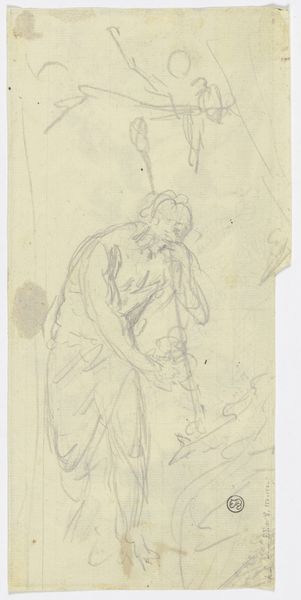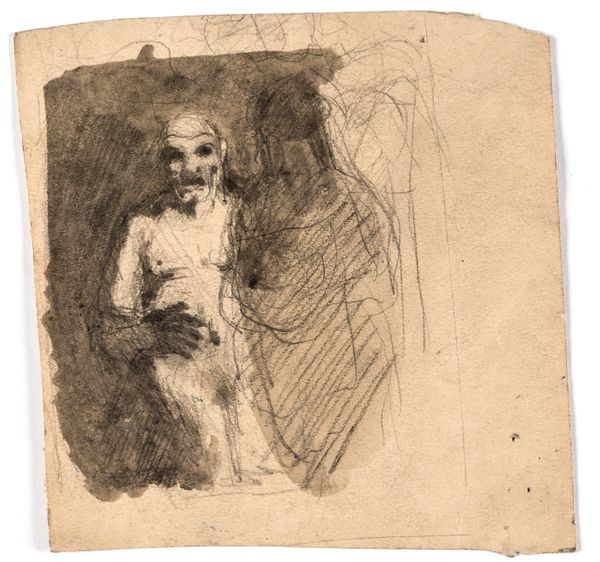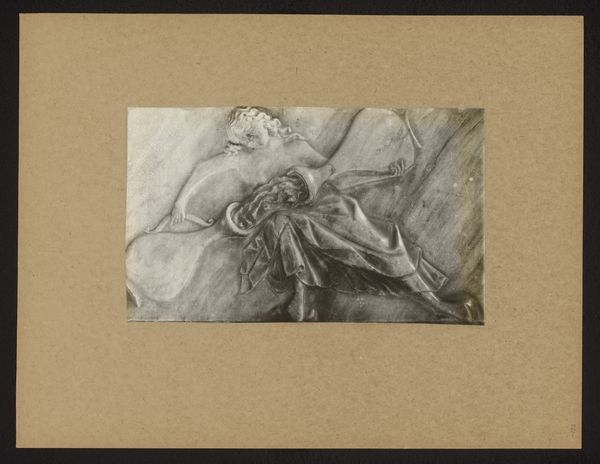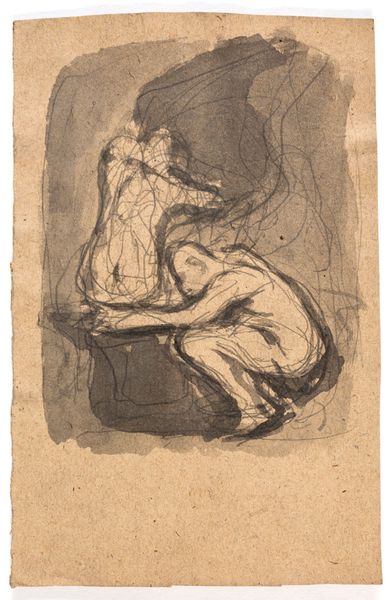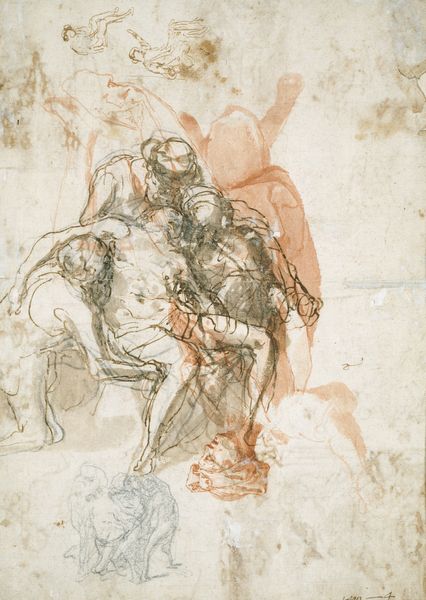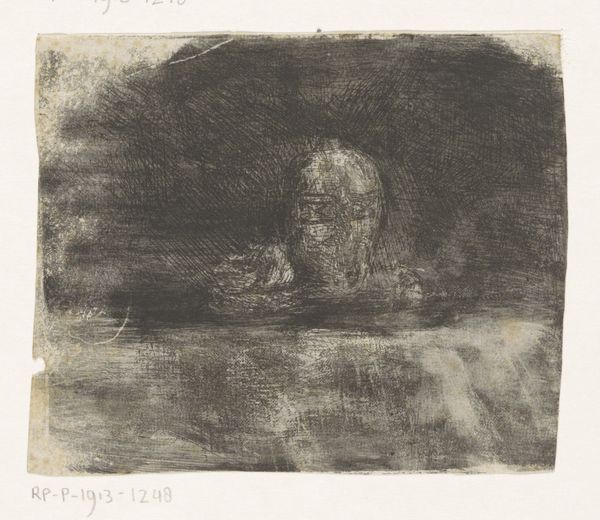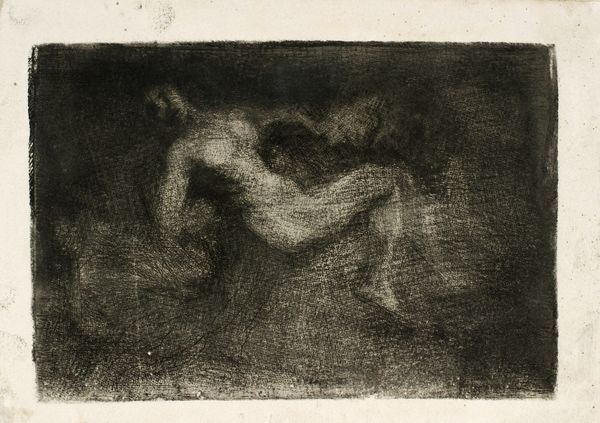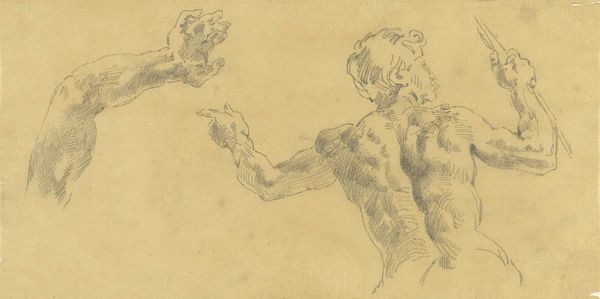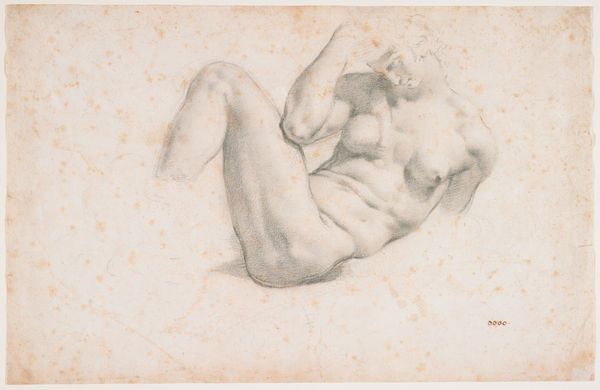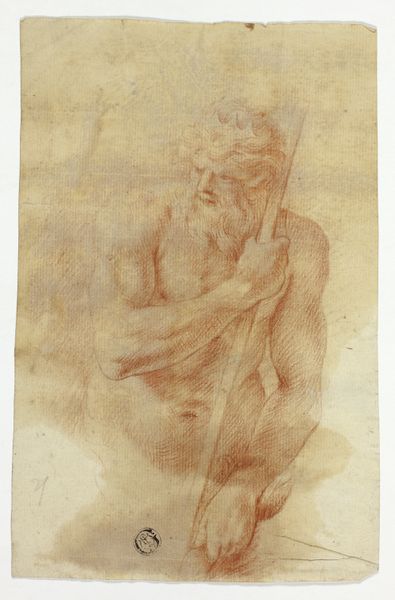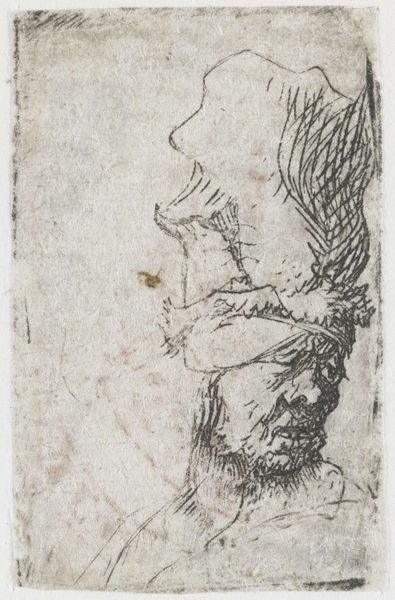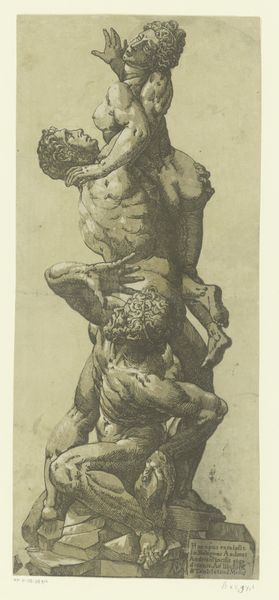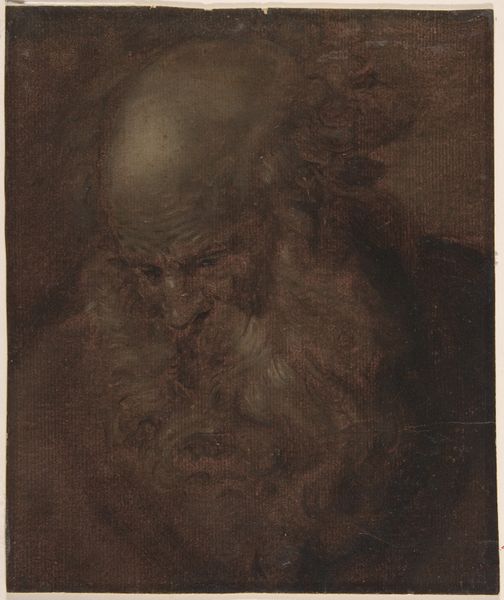
drawing, ink, chalk, charcoal
#
portrait
#
drawing
#
baroque
#
charcoal drawing
#
figuration
#
ink
#
chalk
#
charcoal
Copyright: Public Domain
Curator: Here we have a drawing, possibly a study, attributed to Gaspare Diziani. It’s referred to as “Holy Bishop” and currently resides here at the Städel Museum. Editor: "Holy Bishop"— that title makes it sound so grand. But looking at it, it feels more like a whisper than a sermon. Charcoal, ink, chalk... it’s all blended together on this pale blue paper, creating a figure that's somehow both strong and incredibly fragile. Curator: Diziani's handling of materials certainly emphasizes a tension. The visible layers of charcoal, chalk, and ink speak to a process of both building and refining. The figure, rendered in such a provisional manner, is intriguing, suggesting it served a didactic function for workshop members. What was readily available, and how that influenced output in workshops matters, wouldn't you agree? Editor: Oh, absolutely. It’s interesting to imagine Diziani's workshop. A room buzzing with activity, apprentices grinding pigments, the master sketching furiously by candlelight. I get this sense of immediacy looking at it – like he was trying to capture a fleeting expression, a momentary insight. See how his beard just sort of melts into the background? He’s right there, yet disappearing. Curator: Note how Diziani is using those humble materials – charcoal, chalk and ink, as you say. In this way, he's actually demonstrating that artistic value isn't inherently tied to expensive pigments. Instead, he focuses attention on the skill and ingenuity of the artist to create form and impart emotive content through, seemingly, inexpensive stuff. Editor: And look at the hands. They're clasped tightly together, almost wringing. Is it prayer? Worry? Both? You can almost feel the weight of the unseen responsibilities he carries. It is evocative to imagine being on that precarious perch, knowing everyone in town relies on you to do what is right. Curator: It highlights how artistic traditions adapted to and were sometimes constrained by, the availability and affordability of materials. Editor: So, "Holy Bishop," more human than holy, sketched with the tools at hand to remind us that even the most revered figures are made of the same dust as us. Curator: Precisely. And it's through the materials, the very matter of the art, that we come to understand its deeper layers.
Comments
No comments
Be the first to comment and join the conversation on the ultimate creative platform.

